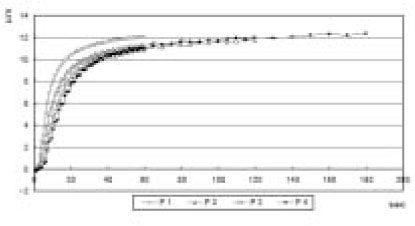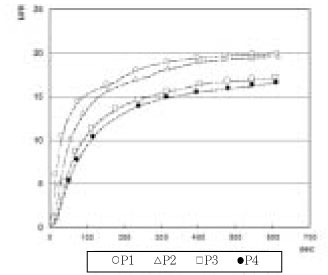References
1. Alvarez-Gayosso C, Barcelo-Santana F, Guerrero-Ibarra J, Saes-Espinola G, Canseco-Martinez MA. Calculation of contraction rates due to shrinkage in light-cured composites. Dent Mater 2004. 20(3)228–235.
2. Bausch JR, de Lange K, Davidson CR, Peters A, de Gee AJ. Clinical significance of polymerization shrinkage of composite resins. J Prosthet Dent 1982. 4859–67.
3. Jorgensen KD, Asmussen E, Shimokobe H. Enamel damages caused by contracting restorative resins. Scand J Dent Res 1975. 83120–122.
4. Davidson CL, de Gee AJ. Relaxation of polymerization contraction stresses by flow in dental composites. J Dent Res 1984. 63146–148.
5. Bouschlicher MR, Rueggeberg FA. Effect of ramped light intensity on polymerization force and conversion in a photoactivated composite. J Esthet Dent 2000. 12328–339.
6. Eick JD, Welch FH. Polymerization shrinkage of posterior composite resins and its possible influence on postoperative sensitivity. Quintessence Int 1986. 17103–111.
7. Kemp-Scholte CM, Davidson CL. Marginal sealing of curing contraction gaps in Class V composite resin restorations. J Dent Res 1988. 67(5)841–845.
8. Lutz F, Krejci I, Barbakow F. Quality and durability of marginal adaptation in bonded composite restoration. Dent Mater 1991. 7197–213.
9. Kanca J, Suh BI. Pulse activation : Reducing resin-based composite contraction stresses at the enamel cavosurface margins. Am J Dent 1999. 12107–112.
10. Roberts JC, Powers JM, Craig RG. Fracture toughness of composite and unfilled restorative resins. J Dent Res 1977. 56748–753.
11. Sakaguchi RL, Peter MC, Nelson SR, Douglas WH, Poort HW. Effects of polymerization contraction in composite restorations. J Dent 1992. 20(3)178–182.
12. Antonucci JM, Toth EE. Extent of polymerization of dental resins by differential scanning calorimetry. J Dent Res 1983. 62121–125.
13. Venhoven BAM, de Gee AJ, Davidson CL. Light initiation of dental resins : dynamics of the polymerization. Biomaterials 1996. 172313–2318.
14. Park SH, Lee SY, Cho YS, Kim SS. Amount of Polymerization Shrinkage and Shrinkage Stress in Composites and Compomers for Posterior Restoration. J Korean Acad Conserv Dent 2003. 28348–353.
15. de Gee AJ, Feilzer AJ, Davidson CL. The linear polymerization shrinkage of unfilled resins and composites determined with a linometer. Dent Mater 1993. 911–14.
16. Feilzer AJ, Dooren LH, de Gee AJ, Davidson CL. Influence of light intensity on polymerization and integrity of restoration-cavity interface. Eur J Oral Sci 1995. 103322–326.
17. Unterbrink GL, Muessner R. Influence of light intensity on two restorative systems. J Dent 1995. 23183–189.
18. Uno S, Asmussen E. Marginal adaptation of a restorative resin polymerized at reduced rate. Scand J Dent Res 1991. 99440–444.
19. Mehl A, Hickel R, Kunzelmann KH. Physical properties and gap formation of light-cured composites with and without 'softstart-polymerization'. J Dent 1997. 25321–330.
20. Goracci G, Mori G, de Martinis LC. Curing light intensity and marginal leakage of resin composite restorations. Quintessence Int 1996. 27355–362.
21. Dennison JB, Yaman P, Seir R, Hamilton JC. Effect of variable light intensity on composite shrinkage. J Prosthet Dent 2000. 84499–505.
22. Rueggeberg FA, Craig RG. Correlation of parameters used to estimate monomer conversion in a light activated resin composite. J Dent Res 1988. 67932–937.
23. Lee SY, Park SH. Measurements of Shrinkage Stress and Reduction of Inter-cuspal Distance in Maxillary Premolars Resulting from Polymerization of Composites and Compomers. J Korean Acad Conserv Dent 2004. 29346–352.
24. Suliman AA, Boyer DB, Lakes RS. Cusp movement in premolars resulting from composite polymerization shrinkage. Dent Mater 1993. 96–10.
25. Ericson D, Paulsson L, Sowaik H, Derand T. Reduction of cusp deflection resulting from composite polymerization shrinkage, using a light-transmitting cone. Scand J Dent Res 1994. 102244–248.
26. Obici AC, Sinhoreti MA, de Goes MF, Consani S, Sobrinho LC. Effect of the photo-activation method on polymerization shrinkage of restorative composites. Oper Dent 2002. 27192–198.
27. Brackett WW, Haisch LDA, Covey DA. Effect of plasma arc curing on microleakage of Class V resin-based composite restorations. Am J Dent 2000. 13121–122.
28. Walls AWC, McCabe JF, Murray JJ. The polymerization contraction of visible-light activated composite resins. J Dent 1988. 16177–181.
29. Rueggeberg FA, Caughman WF, Curtis JW Jr. Effect of light intensity and exposure duration on cure of resin composite. Oper Dent 1994. 1926–32.
30. Rueggeberg F. Contemporary issues in photocuring. Compend Contin Educ Dent Suppl 1999. (25)S4–S15.
31. Davidson-Kaban SS, Davidson CL, Feilzer AJ, de Gee AJ, Erdilek N. The effect of curing light variations on bulk curing and wall-to-wall quality of two types and various shades of resin composites. Dent Mater 1997. 13344–352.
32. Koran P, Kurschner R. Effect of sequential versus continuous irradiation of a light-cured resin composite on shrinkage, viscosity, adhesion and degree of polymerization. Am J Dent 1998. 1117–22.
33. Asmussen E, Peutzfeldt A. Flexural strength and modulus of a step-cured resin composite. Acta Odontol Scand 2004. 6287–90.
34. Asmussen E, Peutzfelt A. Influence of UEDMA, Bis-GMA and TEGDMA on selected mechanical properties of experimental composite resins. Dent Mater 1998. 1451–56.
35. Lambrechts P, Braem M, Vanherle G. In : Derrick DD, ed. Evaluation of clinical performance for posterior composite resins and dentine adhesives. The Dental Annual 1988. London: Butterworth and Co. Ltd; 147–187.
36. Suh BI, Feng L, Wang Y, Cripe C, Cincione F, de Rijk W. The effect of the pulse-delay cure technique on residual strain in composites. Compendium 1999. 204–12.
37. Asmussen E, Peutzfelt A. Influence of pulse-delay curing on softening of polymer structures. J Dent Res 2001. 801570–1573.
38. Sideridou I, Tserki V, Papanastasiou G. Study of water sorption, solubility, and modulus of elasticity of light-cured dimethacrylate-based dental resins. Biomaterials 2003. 24655–665.
39. Peutzfeldt A, Sahafi A, Asmussen E. Characterization of resin composites polymerized with plasma arc curing units. Dent Mater 2000. 16330–336.
40. Lim BS, Ferracane JL, Sakaguchi RL, Condon JR. Reduction of polymerization contraction stress for dental composites by two-step light-activation. Dent Mater 2002. 18436–444.












